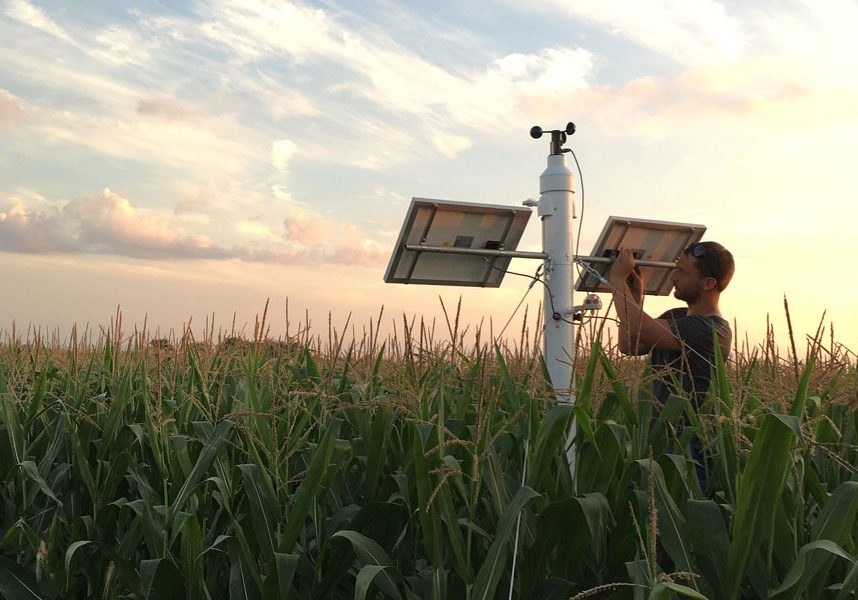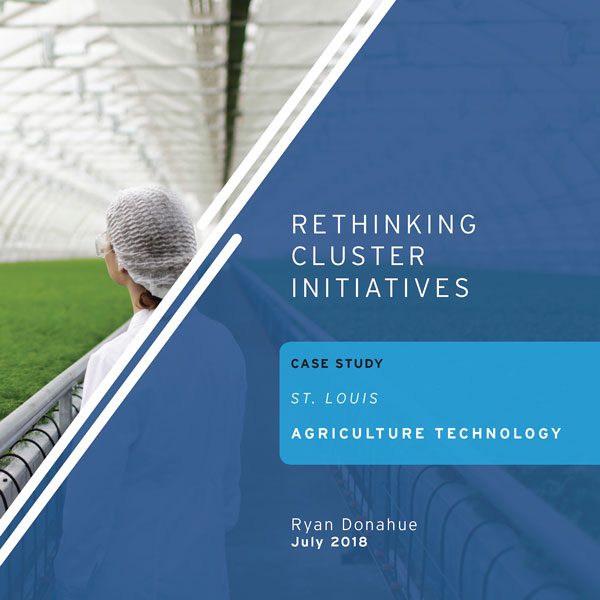St. Louis Innovation Community The Heartland of Bioscience Research and Innovation
In the last two decades, St. Louis has made a clear commitment to fostering an innovation ecosystem – emerging as a hub for bioscience and agtech startups.
St. Louis’ dynamic system of entrepreneur support organizations, venture capital firms, accelerators and incubators serves as a magnet for talented scientists and entrepreneurs from across the globe. Between 2013 and 2021, St. Louis bioscience companies raised more than $500M.
Business growth is sparked by several venture capital firms with a focus on agriculture research and technologies: Arch Grants, Bayer Grants4Ag, BioGenerator, Cultivation Capital, Lewis & Clark AgriFood, and Rabo AgriFinance to name a few.
St. Louis delivers an impressive combination of connectivity to grower customers because the region is within a 500-mile radius of more than half of all U.S. agriculture production, including 80% of the nation’s corn and soybeans. The region is home to the National Corn Growers Association, American Soybean Association, United Soybean Board, U.S. Soybean Export Council, Renewable Fuels Association, and the U.S. Farmers and Ranchers in Action.
A recent Brookings Institute study praises St. Louis’ approach to creating an innovation cluster: “The implementation of the St. Louis agtech cluster is distinguished by the fact that the region took a broad approach from the very beginning, with parallel strategies focused on every major area of need: capital, talent, facilities, and networks.”

31
active investors
$1B+
active capital investment
19
commercializations & exits
9
strategics/
multinationals
Growing a 21st Century Economy
BRDG Park is one piece in an amazing ecosystem growing here in St. Louis.
This includes the 39 North innovation district of which we are a part, and additional innovation communities throughout the region.
39 North is 600-acre innovation district that is home to the Donald Danforth Plant Science Center, BRDG Park, Bayer Crop Science, Helix Center Incubator, Yield Lab Accelerator, BioGenerator, the St. Louis Community College Center for Plant and Life Sciences, and more than dozens of bioscience companies. Since the 39N Master Plan was unveiled in 2016, more than $120 million of private/public investment has been made to advance the goals of the plan. To build on the momentum, in 2023 seven institutions from the public/private sector came together as anchor institutions and established 39 North AgTech Innovation District as a nonprofit organization responsible for elevating the innovation district to the next level of successful growth and economic impact.
Other key players helping to support and accelerate the St. Louis innovation economy are the Cortex Innovation Community, T-REX and BioSTL.
The National Geospatial Intelligence Agency confirmed in 2016 its decision to stay in St. Louis and construct a new $1.7B facility. Farmers use satellite imagery and mapping platforms to assess crop performance and health to make more informed decisions. These applications potentially hold solutions to challenges ranging from food insecurity and climate change to pandemic prevention and global terrorism.
The Taylor Geospatial Institute (TGI) was established in 2022 as a first-of-its-kind institution that brings together eight leading research institutions including the Danforth Plant Science Center, to collaborate on research into geospatial technology. The establishment of TGI implements one of the key components of the GeoFutures Strategic Roadmap, the St. Louis region’s plan to become the world’s geospatial center in the next decade.The Taylor Geospatial Institute will act as a regional hub for access to and development of technology powered by big data analytics and computing resources to support a collaborative research and training environment with a focus on geospatial science and computation, national security, food security, and geospatial health.

The St. Louis region provides a critical mass of talent and the greatest concentration of ag-science Ph.D.s, working on global issues like food production and security, climate change, and clean energy. Institutions like Washington University in St. Louis, Saint Louis University, University of Missouri-St. Louis, Harris-Stowe State University, and St. Louis Community College, to name a few, educate some of the brightest minds in the world, fueling a steady pipeline of talent to meet rising demand from companies in advanced industries. St. Louis is also home to nationally recognized skills providers, such as LaunchCode.
More than 40% of the metro area college graduate population have science and engineering (or related) as their first degree.
Recent AgTech News

CoverCress would not be where we are today if not for the facilities, funding, and talent we needed to meet critical milestones in our growth. Access to greenhouses, core technologies and expertise at the Danforth Center; interns and lab technicians from the Community College, students from our great universities, and financial support from a number of strategic and financial investors, including several prominent St. Louis based agtech focused groups, fueled our R&D platform, helped us scale, and eventually led us to our unique exit with partners, Bayer, Bunge and Chevron.”
Mike DeCamp
President & CEO Expedition Ag Partners and former CEO CoverCress
Chair, 39 North Board of Directors

